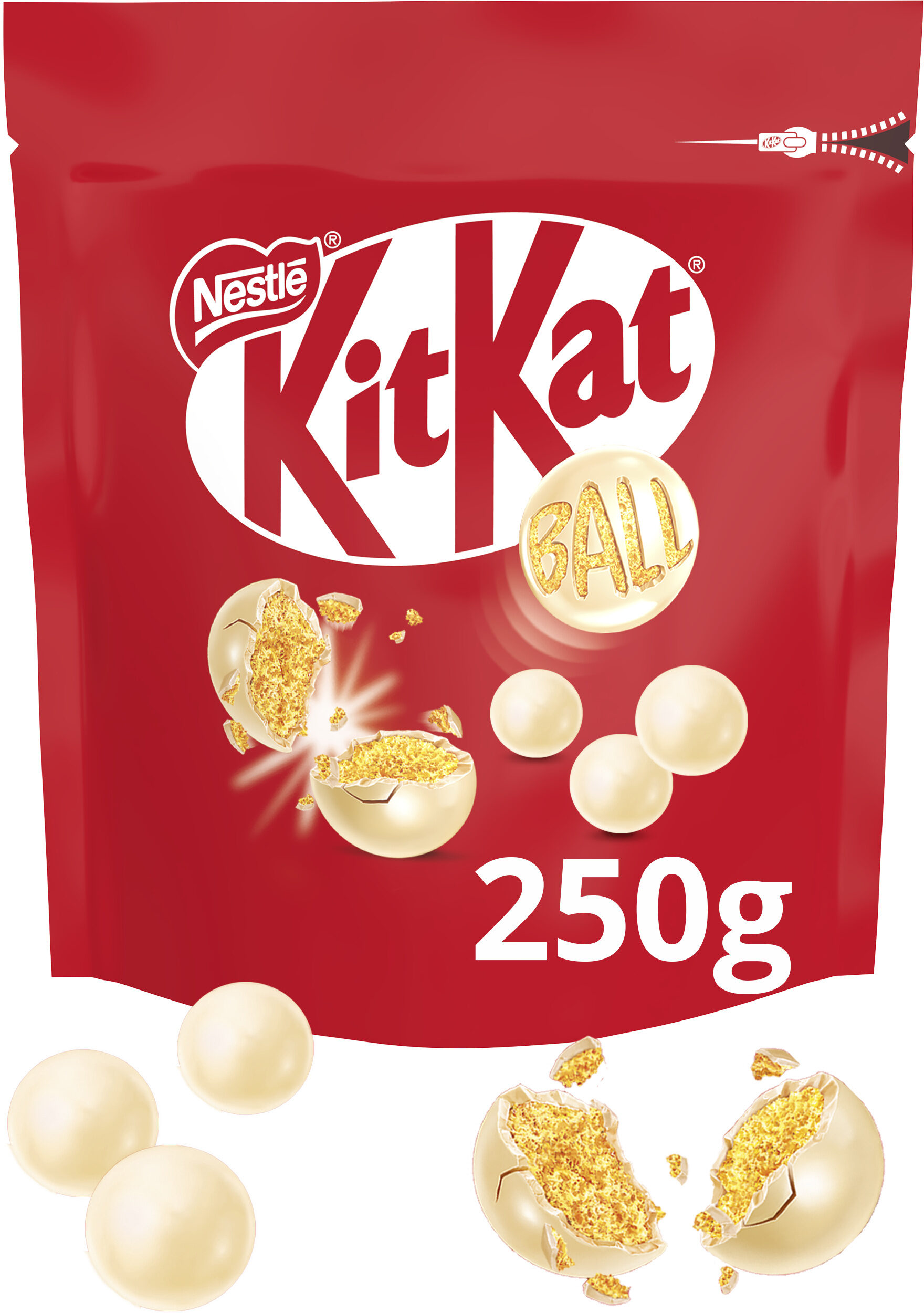KITKAT Ball, Billes au chocolat Blanc, 250g - 250 g
This product page is not complete. You can help to complete it by editing it and adding more data from the photos we have, or by taking more photos using the app for Android or iPhone/iPad. Thank you!
×
Some of the data for this product has been provided directly by the manufacturer NESTLE FRANCE. - Customer service: Contact form 0 809 400 412 (service gratuit + prix de l'appel)
Barcode: 8000300288292 (EAN / EAN-13)
Common name: Bonbons de chocolat blanc (44%) : cœur aux céréales croustillantes (19%) enrobage crème confiseur (35,9%)
Quantity: 250 g
Categories: Snacks, Barres, Barres chocolatées, Barres chocolatées biscuitées, Bonbons de chocolat, Cacao et dérivés, Confiseries, Confiseries chocolatées, Snacks sucrés
Labels, certifications, awards:
Green Dot, Nutriscore, Nutriscore Grade E, Rainforest Alliance, Triman


Stores: carrefour.fr
Countries where sold: France
Matching with your preferences
Environment
Packaging
Transportation
Threatened species
Labels
Other information
Preparation: Produit prêt à consommer
Conservation conditions: A conserver au frais et au sec.
Customer service: Nestlé France, 34-40 rue Guynemer 92130 Issy-les-Moulineaux
Report a problem
Data sources
The manufacturer NESTLE FRANCE uses Equadis to automatically transmit data and photos for its products.
Product added on by openfoodfacts-contributors
Last edit of product page on by grumpf.
Product page also edited by date-limite-app, desan, driveoff, ecoscore-impact-estimator, kiliweb, musarana, org-nestle-france, packbot, quentinbrd, roboto-app, telperion87, teolemon, yuka.Ukk5Y1Bxa2YrK1FPdzlzNDFScmZxb2tzNU1lN1FXZnNJTE16SUE9PQ, yuka.WVo4Rk1wOEN2TU10eS9FaStEelV3c2hsK2NLNWIweW9FOFVNSWc9PQ, yuka.sY2b0xO6T85zoF3NwEKvln1Oa-bagCOYCjLvp0HUwO-JA4PrTswvwdfzY6s.









